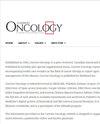New Oncologic Drugs from 2008 to 2023—Differences in Approval and Access between the United States, Europe and Brazil
IF 2.8
4区 医学
Q2 ONCOLOGY
引用次数: 0
Abstract
Introduction: Advancements in oncology have revolutionized cancer treatment, with new drugs being approved at different rates worldwide. Our objective was to evaluate the approval of new oncological drugs for solid tumors by the Food and Drug Administration (FDA), the European Medicines Agency (EMA), and the Brazilian Health Regulatory Agency (ANVISA) since 2008. Methods: Data were collected from public and online databases by searching for the date of submission, the date of the procedure, the date of approval, clinical indication, and drug characteristics. The distribution was tested using the Shapiro–Wilk, test and comparisons were made using the Mann–Whitney U test; the data are reported using median days and interquartile range (IQR1–IQR3). Results: In total, 104 new oncologic drugs for the treatment of solid tumors were approved by the three agencies: 98 by the FDA, 90 by the EMA, and 68 by ANVISA. The cancer types with the highest number of first indications were lung cancer (n = 24), breast cancer (n = 15), and melanoma (n = 15). Most approvals were for oral medications (n = 63) and tyrosine–kinase inhibitors or other small-molecule inhibitors (n = 54). Time to approval after submission was as follows: the FDA—224 days (167–285); the EMA—364 days (330–418); and ANVISA—403 days (276–636) (p < 0.00001 for the FDA to the EMA and the FDA to ANVISA). The difference between submission dates among the agencies was as follows: EMA–FDA: 24 days (0–85); ANVISA–FDA: 255 (114–632); and ANVISA–EMA: 260 (109–645). The difference in approval dates between the agencies was as follows: EMA–FDA: 185 days (59–319); ANVISA–FDA: 558 (278–957); and ANVISA–EMA: 435 days (158–918). Conclusions: New oncologic drugs are submitted to the FDA and EMA for approval on similar dates; however, the longer appraisal period by the EMA pushes the approval date for Europe to approximately 6 months later. The same steps at ANVISA delay the approval by 1.5 years. Such procedures cause a significant difference in available medications between these regions.2008 至 2023 年肿瘤新药--美国、欧洲和巴西在批准和使用方面的差异
简介肿瘤学的进步为癌症治疗带来了革命性的变化,全世界批准新药的速度各不相同。我们的目的是评估自 2008 年以来美国食品药品管理局 (FDA)、欧洲药品管理局 (EMA) 和巴西卫生监管局 (ANVISA) 批准治疗实体瘤的肿瘤新药的情况。研究方法通过搜索提交日期、程序日期、批准日期、临床适应症和药物特征,从公共数据库和在线数据库中收集数据。数据分布采用 Shapiro-Wilk 检验,比较采用 Mann-Whitney U 检验;数据采用中位数天数和四分位数间距(IQR1-IQR3)进行报告。结果三个机构共批准了 104 种治疗实体瘤的肿瘤新药:美国食品药品管理局(FDA)批准了 98 种,欧洲医学管理局(EMA)批准了 90 种,巴西国家卫生监督局(ANVISA)批准了 68 种。首次适应症数量最多的癌症类型是肺癌(24 例)、乳腺癌(15 例)和黑色素瘤(15 例)。获得批准最多的是口服药物(63 例)和酪氨酸激酶抑制剂或其他小分子抑制剂(54 例)。提交后获得批准的时间如下:FDA-224 天(167-285 天);EMA-364 天(330-418 天);ANVISA-403 天(276-636 天)(从 FDA 到 EMA 以及从 FDA 到 ANVISA,P < 0.00001)。各机构之间的提交日期差异如下:EMA-FDA:24天(0-85);ANVISA-FDA:255天(114-632):255天(114-632);ANVISA-EMA:260天(109-645)。各机构之间的批准日期差异如下:EMA-FDA:185天(59-319);ANVISA-FDA:558天(278-957):558天(278-957);ANVISA-EMA:435天(158-918)。结论:新的肿瘤药物提交给 FDA 和 EMA 批准的日期相似;但是,EMA 的评估期较长,因此欧洲的批准日期要晚 6 个月左右。ANVISA 的相同步骤则将审批时间推迟了 1.5 年。这些程序造成了这些地区之间可用药物的巨大差异。
本文章由计算机程序翻译,如有差异,请以英文原文为准。
求助全文
约1分钟内获得全文
求助全文
来源期刊

Current oncology
ONCOLOGY-
CiteScore
3.30
自引率
7.70%
发文量
664
审稿时长
1 months
期刊介绍:
Current Oncology is a peer-reviewed, Canadian-based and internationally respected journal. Current Oncology represents a multidisciplinary medium encompassing health care workers in the field of cancer therapy in Canada to report upon and to review progress in the management of this disease.
We encourage submissions from all fields of cancer medicine, including radiation oncology, surgical oncology, medical oncology, pediatric oncology, pathology, and cancer rehabilitation and survivorship. Articles published in the journal typically contain information that is relevant directly to clinical oncology practice, and have clear potential for application to the current or future practice of cancer medicine.
 求助内容:
求助内容: 应助结果提醒方式:
应助结果提醒方式:


